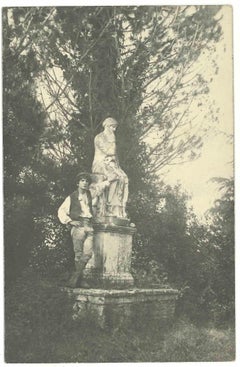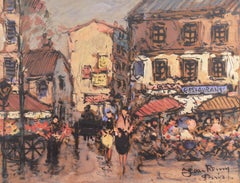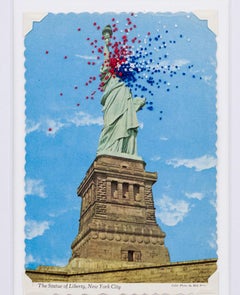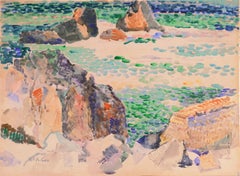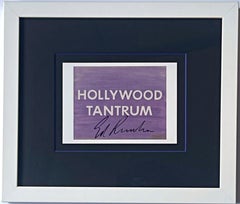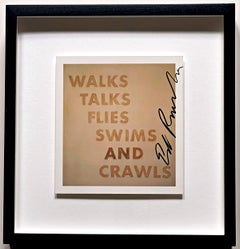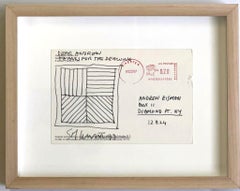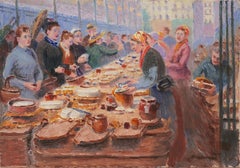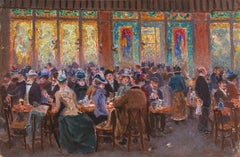Art by Medium: Postcard
1970s Pop Art Art by Medium: Postcard
Postcard
1990s Pop Art Art by Medium: Postcard
Postcard, Lithograph, Offset
2010s Abstract Art by Medium: Postcard
Acrylic, Postcard, Pen, Graphite
1990s Minimalist Art by Medium: Postcard
Postcard, Felt Pen
1880s Impressionist Art by Medium: Postcard
Oil, Postcard
1880s Impressionist Art by Medium: Postcard
Oil, Postcard
1980s Pop Art Art by Medium: Postcard
Postcard
2010s Abstract Art by Medium: Postcard
Acrylic, Postcard, Pen, Graphite
Early 2000s Minimalist Art by Medium: Postcard
Postcard, Felt Pen
1960s Pop Art Art by Medium: Postcard
Postcard
1970s Art by Medium: Postcard
Postcard
1980s Modern Art by Medium: Postcard
Paper, Postcard
1980s Art by Medium: Postcard
Postcard
1870s Impressionist Art by Medium: Postcard
Gouache, Postcard
1970s Folk Art Art by Medium: Postcard
Tempera, Postcard
1980s Abstract Geometric Art by Medium: Postcard
Ink, Postcard, Mixed Media, Offset
1950s Art Deco Art by Medium: Postcard
Silver Gelatin, Postcard
21st Century and Contemporary Street Art Art by Medium: Postcard
Postcard
1980s Modern Art by Medium: Postcard
Paper, Postcard
21st Century and Contemporary Contemporary Art by Medium: Postcard
Thread, Found Objects, Postcard
2010s Contemporary Art by Medium: Postcard
Tape, Acrylic, Postcard, Graphite
1990s Contemporary Art by Medium: Postcard
Postcard, Permanent Marker
1980s Pop Art Art by Medium: Postcard
Postcard
2010s Modern Art by Medium: Postcard
Ink, Postcard
Early 2000s Realist Art by Medium: Postcard
Ink, Postcard, Lithograph, Offset
1970s Pop Art Art by Medium: Postcard
Offset, Paper, Postcard, Lithograph
1930s Art by Medium: Postcard
Watercolor, Gouache, Postcard
21st Century and Contemporary Contemporary Art by Medium: Postcard
Thread, Found Objects, Postcard
1950s Art by Medium: Postcard
Watercolor, Gouache, Postcard
21st Century and Contemporary Contemporary Art by Medium: Postcard
Postcard
1880s Hudson River School Art by Medium: Postcard
Paper, Watercolor, Gouache, Postcard
Late 20th Century Contemporary Art by Medium: Postcard
Watercolor, Postcard, Color Pencil
Late 19th Century Realist Art by Medium: Postcard
Watercolor, Gouache, Postcard
1920s Art by Medium: Postcard
Paper, Watercolor, Gouache, Postcard, Pen
1950s Art Deco Art by Medium: Postcard
Postcard, Silver Gelatin
Early 2000s Contemporary Art by Medium: Postcard
Postcard, Lithograph, Offset
Late 20th Century Abstract Art by Medium: Postcard
Postcard, Lithograph
21st Century and Contemporary Contemporary Art by Medium: Postcard
Thread, Found Objects, Postcard
21st Century and Contemporary Contemporary Art by Medium: Postcard
Thread, Found Objects, Postcard
1910s Art by Medium: Postcard
Pastel, Postcard
Early 20th Century Modern Art by Medium: Postcard
Paper, Postcard
Early 2000s Art by Medium: Postcard
Watercolor, Postcard
2010s Art by Medium: Postcard
Acrylic, Postcard
1980s Modern Art by Medium: Postcard
Paper, Postcard
2010s Abstract Art by Medium: Postcard
Paper, Acrylic, Postcard, Pen, Graphite
2010s Abstract Art by Medium: Postcard
Acrylic, Postcard, Pen, Graphite
1960s Photorealist Art by Medium: Postcard
Ink, Gouache, Color Pencil, Postcard
Early 2000s Contemporary Art by Medium: Postcard
Postcard
2010s Abstract Art by Medium: Postcard
Acrylic, Postcard, Pen, Graphite
2010s Abstract Art by Medium: Postcard
Acrylic, Postcard, Pen, Graphite
2010s Abstract Art by Medium: Postcard
Acrylic, Postcard, Pen, Graphite
1940s Modern Art by Medium: Postcard
Postcard, Paper
1990s Pop Art Art by Medium: Postcard
Postcard, Offset, Ink
1970s Minimalist Art by Medium: Postcard
Permanent Marker, Offset, Postcard, Lithograph
Late 20th Century Abstract Art by Medium: Postcard
Postcard, Lithograph
Late 20th Century American Modern Art by Medium: Postcard
Postcard, Felt Pen, Laid Paper
21st Century and Contemporary Realist Art by Medium: Postcard
Acrylic, Postcard
21st Century and Contemporary Realist Art by Medium: Postcard
Acrylic, Postcard
1960s Art by Medium: Postcard
Postcard
1910s Post-Impressionist Art by Medium: Postcard
Postcard, Laid Paper, Watercolor
